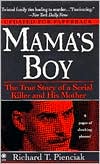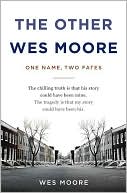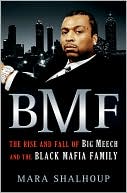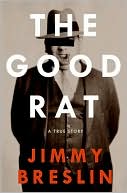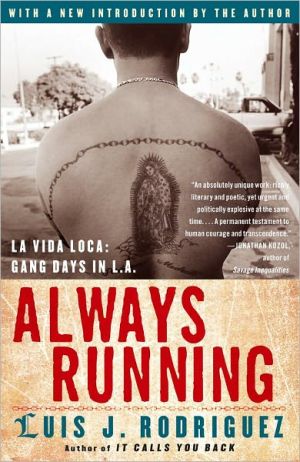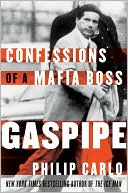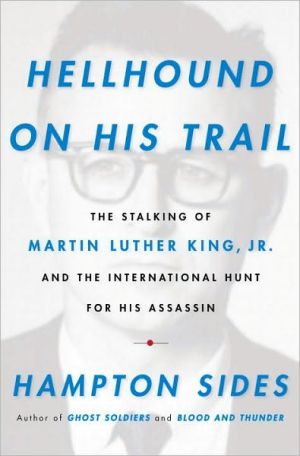Mama's Boy: The True Story of a Serial Killer and His Mother
Sandy-haired and wiry at six feet tall, Napoletano seemed to attract tragedy. In 1984 his fifteen-year-old girlfriend was found dumped in Pennsylvania with her throat slashed. In 1985 his mother-in-law was shot dead on a Bronx street corner. And in 1990 his second wife, missing from their New Jersey home, was discovered crudely buried in Delaware. A rising mound of evidence pointed to young Napoletano, a streetwise auxiliary policeman, bigamist, and adulterer. To FBI profilers, he behaved...
Search in google:
Sandy-haired and wiry at six feet tall, Napoletano seemed to attract tragedy. In 1984 his fifteen-year-old girlfriend was found dumped in Pennsylvania with her throat slashed. In 1985 his mother-in-law was shot dead on a Bronx street corner. And in 1990 his second wife, missing from their New Jersey home, was discovered crudely buried in Delaware. A rising mound of evidence pointed to young Napoletano, a streetwise auxiliary policeman, bigamist, and adulterer. To FBI profilers, he behaved like a sexually sadistic serial killer, undergoing sudden, dangerous mood shifts and imprisoning his victims in downward spirals of abuse. For years Napoletano eluded arrest, and he had his mother to thank most for his freedom. Carolyn Napoletano, a civilian employee of the New York City Police Department who routinely had access to confidential documents, didn't hesitate to coach a witness to lie, interfere with evidence, or supply her son with the alibis he needed. Finally, a young police detective in suburban Clifton, N.J., took on the challenge that the big-city cops and prosecutors had failed to meet. Nick Donato knew that if Eric Napoletano was not stopped, he would surely fall in love again. And if Eric fell in love again, another woman would die. Punctuated with chilling statements that Carolyn Napoletano made to the author, Mama's Boy reveals the inside story of the FBI task force that traced Eric from the East Coast to New Mexico with the aid of the first federal wiretap ever used in a serial killer case. Publishers Weekly Hunting, "one of the chief defining images of manhood," shapes the modern male psyche, justifying images of masculinity biologically rooted in aggression, violence and conquest, asserts Bergman. Over the millennia, "Males hunt. Females gather," and this division of labor, he argues, defined behavior for the sexes as the hunt took on an erotic flavor, teaching men how to experience desire and creating "an identity for the hunter" based on power, male bonding and domination. Although Bergman, an English professor at Pacific Lutheran University in Washington state, gives a nod to the alternate hypothesis that early man was a fruit- and vegetable-eating scavenger, not a hunter, this rhapsodic cultural history of huntingfrom Greek heroic myths of Orion the night stalker to medieval spiritual allegories, Shakespeare, James Fenimore Cooper, Faulkner and Norman Mailerseems tailor-made for disciples of the men's movement. An exhausting, windy, overblown glorification of the chase, it mingles Bergman's personal adventureshunting whales with Eskimos, visiting prehistoric painted caves in Spain, etc.with observations by Ortega y Gasset and Plato, Boy Scout and frontier lore and profiles of hunters such as Davy Crockett, Theodore Roosevelt and British Victorian elephant slaughterer Frederick Selous. (July)
\ Publishers Weekly - Publisher's Weekly\ Hunting, "one of the chief defining images of manhood," shapes the modern male psyche, justifying images of masculinity biologically rooted in aggression, violence and conquest, asserts Bergman. Over the millennia, "Males hunt. Females gather," and this division of labor, he argues, defined behavior for the sexes as the hunt took on an erotic flavor, teaching men how to experience desire and creating "an identity for the hunter" based on power, male bonding and domination. Although Bergman, an English professor at Pacific Lutheran University in Washington state, gives a nod to the alternate hypothesis that early man was a fruit- and vegetable-eating scavenger, not a hunter, this rhapsodic cultural history of huntingfrom Greek heroic myths of Orion the night stalker to medieval spiritual allegories, Shakespeare, James Fenimore Cooper, Faulkner and Norman Mailerseems tailor-made for disciples of the men's movement. An exhausting, windy, overblown glorification of the chase, it mingles Bergman's personal adventureshunting whales with Eskimos, visiting prehistoric painted caves in Spain, etc.with observations by Ortega y Gasset and Plato, Boy Scout and frontier lore and profiles of hunters such as Davy Crockett, Theodore Roosevelt and British Victorian elephant slaughterer Frederick Selous. (July)\ \ \ \ \ Library JournalCombining a violent temper with a mania for control and revenge, Eric Napoletano was convicted of the murder of his second wife in 1993. He has not been charged with the earlier murders in his life-a 15-year-old girlfriend and his first mother-in-law. Eric's mother, a civilian employee of the New York Police Department, asserted his innocence and tried to help cover up his crimes. Theirs was a love-hate relationship. Eric never knew his father, and when Eric was 13, his mother allowed him to move in with an older man she barely knew-"Uncle" Al Jiovine, who was also involved in the attempted cover-up. By the author of Murder at 75 Birch (LJ 9/1/92), this account of a pathetic but dangerously dysfunctional trio will interest true crime buffs.-Gregor A. Preston, formerly with Univ. of California Lib., Davis\ \ \ Brian McCombiePienciak ("Deadly Masquerade") details the terrible and simultaneously pathetic story of a young man the FBI described as "a sexually sadistic serial killer" and the mother who protected him. Carolyn Napoletano is bossy, arrogant, and warped. Her son, Nick, appears weak and inept but harbors a deep rage against Carolyn and her treatment of him. His anger has exploded into at least three brutal murders, beginning with the 1984 killing of his girlfriend. Police suspected Nick immediately but couldn't gather sufficient proof. In 1991, Nick became the prime suspect in the disappearance of his wife, and it's at this point that police began to uncover how Carolyn had shielded Nick. An administrative assistant for the NYPD, she tampered with police memos, evidence, and witnesses related to Nick's murder investigations. In spite of substantial proof to the contrary, she still maintains her innocence. Thankfully, Nick--her creation--is now in prison.\ \ \ \ \ Kirkus ReviewsThe freakish tale of wife-killer Eric Napoletano and the mother who protected him from the police.\ Napoletano was reared in New York City by his racist mother, Carolyn, and a smarmy hustler he referred to as "Uncle Al." Al and Carolyn disliked each other but doted on Eric, a surly youth with a taste for Hispanic and black women, those his mother hated most. Napoletano's victims—a girlfriend, a mother-in-law, and his second wife—were murdered with great savagery, and it's clear from phone records and witnesses cited by Pienciak (Murder at 75 Birch, 1992, etc.) that Al and Carolyn knew about the killings. Napoletano, a onetime trucker, dumped the mutilated bodies of his girlfriend and wife along rural roads near New York. He simply shot his mother-in-law in the street. His mother worked for the NYPD and managed to destroy records and files pertaining to her son's crimes. The story is bizarre, and the players uniquely evil, but the narrative is curiously dry and frequently dull. The details of the crimes are vague since Pienciak gives only the most cursory explanations of how they were carried out. It's clear that Eric's sadism had something to do with events in his childhood, but no theories about its origins are offered, and the details given here of Eric's trial for the murder of his wife are hopelessly muddled. The book works best in the brief sections where we are given Carolyn's own corrosive words, which do tell us concretely about these hideous lives.\ Pienciak's sarcastic tone, from the book's title to his mockery of Carolyn's appearance, repeatedly disrupts the narrative, which never adequately explains what happened, or why.\ \ \
